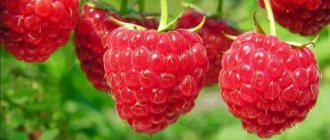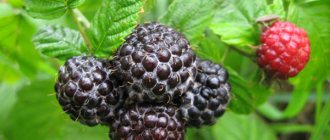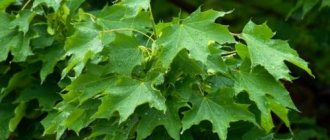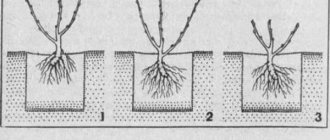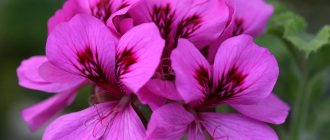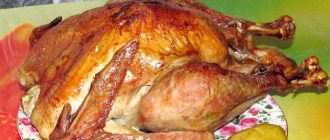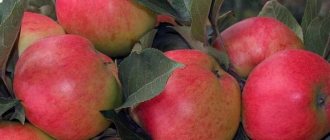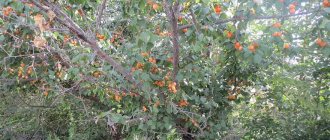Lifestyle of aphids
Aphids are small insects several mm in size. They live in colonies and lead a parasitic lifestyle. Aphids feed on plant sap: they pierce the stem with their tiny proboscis and suck out the plant sap. Affected leaves curl and turn yellow. Aphids can also carry viral and fungal diseases. By processing plant sap, aphids secrete honeydew, which attracts ants.
Females reproduce by laying eggs, up to two hundred in one clutch. The eggs are attached to the back of the leaves using an adhesive substance. One insect can lay up to two dozen such clutches.
Aphid larvae emerging from eggs can reproduce even without fertilization, through parthenogenesis. The higher the threat to the colony, the greater the number of eggs and clutches one individual can produce. Hundreds of thousands of insects can hatch in a month.
Both winged and wingless individuals develop in the offspring. When the colony becomes too numerous, some of the insects fly to other plants, covering a distance of up to 400 meters. Aphids can live from a week to a month. Cool temperatures of up to 10°C extend their life to two months.
A little about aphids
Aphids are parasites on plants and are not able to protect themselves from their natural enemies. After all, many insects (ticks, spiders, bees), as well as birds, eat aphids. The parasite does not have a dense chitinous covering, powerful jaws or poison. Due to the lack of long limbs, the pest is unable to move quickly. The only thing nature has endowed the insect with is a small proboscis, with which it can feed on plant sap. As a result, the leaves of the affected tree or other planting stop growing, begin to curl, wither and fall off.
On a note!
Also, the presence of aphids on plants causes the appearance of a fungus that looks like a sticky coating. Crops affected by the pest cannot survive the winter. Plants stop blooming and bearing fruit, withering over time.
The insect lives on the beneficial elements contained in plant sap. The liquid excess that remains after its processing is mixed with the pest's secretions, turning into a mixture of sugary taste. It is she who attracts other insects, forcing them to subsequently take care of the parasite.
Ants and aphids
How does an ant family live?
Ants are “social” insects - they always live in families in the anthill nests they build.
There are three castes in the colony: the most important is the queen or queen. It is larger than other ants and lives up to 20 years. Its only task is reproduction. Fertilized eggs hatch into females, unfertilized eggs hatch into males, and they have wings.
After the males take the necessary part in mating, they are destroyed by other inhabitants of the anthill. Male ants live a maximum of a few weeks.
The majority of working insects (foragers) in an anthill are females with an underdeveloped reproductive system. They maintain order and look after anthills, obtain food and raise offspring. The largest individuals among the workers perform guard functions.
Also, slaves can live in the anthill - ants captured in other colonies, who do the hardest work of maintaining the anthill.
Ants feed on plant sap and seeds. Working individuals are constantly in search of food for the queen and the young.
Based on the fable “The Aphid and the Ant”
In the insect world, symbiotic relationships are often found that help certain orders of insects survive. A symbiosis has developed between garden ants and aphids, which they specifically spread throughout the green part of the plant. This trick was invented to obtain a constant power source. How does this happen?
1) Aphids feed on plant sap, processing proteins and releasing an unnecessary solution of sugars.
2) Ants capture small aphids with their jaws and carry them to tender shoots and leaves.
3) Then active insects “milk” the aphids, obtaining sweet honeydew for food.
In the process of symbiosis, many species of aphids have become accustomed to their patrons. Therefore, they do not spray the final product on the leaves, but wait until the ant comes running and tickles it with its antennae to get a sweet portion of honeydew.
The ant does not forget about his charges, protecting them from enemies. It is much larger in size than small aphids, so it can afford to transport wingless females to different places. Within a couple of days, the colony grows before our eyes. Each female gives birth to up to a hundred individuals per day. Ants can count on a continuous supply of honeydew. The “confectionery factory” needs to be protected and the warrior ants flock to protect it.
Mutually beneficial alliance of insects
Ants and aphids create a symbiosis - their relationship is beneficial for both parties. Let's consider whether ants eat aphids, why and how they milk them. Leaf aphids feed on plant sap and excrete sugar from their bodies in the form of sweet drops called honeydew. The ants collect this dew and feed it to their queen and growing offspring.
Ants tickle aphids with their antennae, which secrete a sweet liquid. Sometimes the aphid itself waits for an ant to be nearby in order to give it a drop of dew. It is this process of transferring and receiving honeydew that is called “milking.” Some ants even store sweet liquid in their crops for future use.
Foragers transfer aphids from already eaten and drying plants to new and juicy ones. Aphids choose tender tops - they have a thin proboscis, so they feed on plants with soft stems and leaves that do not grow woody for a long time. Currants are most severely affected.
Ants also “graze” and protect their “herd” from threatening ladybugs and other insects and birds that eat aphids. Sometimes they make fences of twigs around plants on which aphids feed, to protect them from ants from other colonies.
With the onset of autumn, the ants take their wards to the anthill for the winter - they take care of the aphids and their offspring; and in the spring they are again delivered to the nearest fresh shoots.
When the aphid colony grows extremely large or when unfavorable weather occurs, the ants eat part of the population, thus regulating the number of their “wards”.
Symbiosis of ants and aphids
How do ants and aphids interact? Based on the principle of symbiosis - mutually beneficial cooperation of living organisms.
Honeydew, which is secreted by aphids during their life processes, is one of the favorite delicacies of ants, whose food mainly consists of carbohydrates and protein. Of course, ants, on occasion, will happily “snack” some other insect larva, a piece of fruit, seeds or plant juice, but honeydew is a very high-calorie and affordable food, and therefore very desirable for ants.
As you know, ants are very highly organized creatures that, in the process of evolution, acquired the ability to learn and teach. So, having discovered that aphids are capable of producing such a healthy and tasty product, the ants practically turned them into their “livestock.”
Not only do they know how to “milk” it, tickling its abdomen with their antennae and stimulating an increased yield of honeydew, but they also transport aphids to the youngest, juiciest and most delicious parts of plants, and, if necessary, protect their “herds” from their natural predators (ladybugs, hoverflies, lacewings, etc.) and even build special protected shelters for them or keep them in their anthills. When moving an ant family to a new area, be sure that they will bring aphids with them and “settle” them in a new place (on your cultivated plants, for example) as an uninterrupted source of tasty carbohydrates.
Moreover, in addition to the fact that ants “breed” aphids, they themselves can actively damage cultivated plants, feasting on delicate buds, flowers and even roots, berries and vegetables. In addition, ants, in the process of their life activity, sharply acidify the soil around the anthill, and with their underground passages they cause damage to lawns, flower beds, beds, and alpine hills. And we’re not even talking about the possible invasion of uninvited neighbors into your country house or cellar with supplies, as well as the possibility of transmitting all kinds of animal parasites and even bacterial diseases of humans.
As you can see, despite the fact that ants can bring some benefit to a summer cottage - for example, by eating harmful caterpillars with larvae and taking part in the structuring and aeration of the soil - in general, they do much more harm to the summer resident and cultivated plants. And coping with such a numerous, active and omnipresent “enemy” is very, very difficult.
How to fight against this type of relationship?
Important! Experts advise taking measures against both pests at once - if you only get rid of aphids, then there is a chance that the surviving ants will bring a new colony to the plants.
To get rid of aphids on your site, you can use the following methods:
- Manually collect from plants.
- Wash off the tops of the plants with water pressure - while they climb back, the plants will have time to become woody.
- Near plants that are often affected by aphids, plant garlic and onions, which repel them with their smell.
- Plant around the area plants that attract natural pests (ladybugs, lacewings, ground beetles) - nettles and other herbs.
- Use chemicals: “Akarin”, “Aktofit”, “Fitoverm”, “Biotlin”.
- Spray the bushes with a soap or kerosene solution, a solution of ash or onion peels.
- Fumigate the plantings with smoke.
Plant-based folk recipes against aphids have proven themselves well:
- garlic solution;
- a solution of hot pepper pods, based on celandine, tomato or potato tops.
The selected ingredient must be finely chopped, poured with water and allowed to brew.
At the same time, it is necessary to fight ants. Effective methods against them are the following:
- pour kerosene over the anthill and ant paths;
- sprinkle anthills and the ground around them with anise leaves, tobacco ash or charcoal;
- sprinkle the anthill with table salt;
- plant more wormwood and parsley on the site, since ants cannot stand their smell;
- spray plants affected by insects with chemicals - “Anteater”, “Muracid”, “Muravin”.
How to protect trees?
- First of all, it is recommended to plant plants around the perimeter of the site whose smell these pests cannot tolerate:
- onion;
- garlic;
- mint;
- marigold.
- We periodically carry out preventive treatment of trees and attract beneficial insects to the site.
- We remove peeling bark from fruit trees and root shoots - aphids lay eggs in them for the winter. We whiten tree trunks and shrubs with lime.
To protect trees from damage by aphids and ants, the following methods of protecting trunks are often used:
- Wrap the base of the trees with corrugated cardboard or plastic film in several layers, apply turpentine along the edge of this catching belt and tie it with a soft rope.
- Dig a shallow hole around the perimeter of the tree, place a car tire in it and pour water.
- Rub the lower part of the trunk with garlic - ants cannot stand its smell, they will not spoil these trees and will not allow their aphid colony there.
- Place wormwood grass, tomato or potato tops around the trunks.
Are you fighting an unequal battle against aphids? Read about how to get rid of pests on peppers, cucumbers, orchids and roses.
Aphids and ants cause damage to plants individually, and if they combine in symbiosis, their union will result in catastrophic damage to plantings. Together they destroy young shoots and harm new plantings. It is necessary to combat both pests simultaneously and use the entire range of measures: from manual collection of insects to spraying trees and shrubs with insecticides.
If you find an error, please select a piece of text and press Ctrl+Enter.


